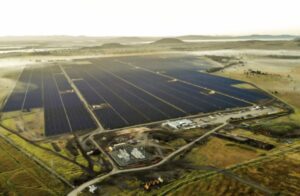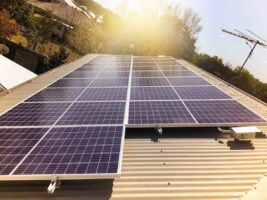A couple of months ago David Crane, the CEO of NRG, a large US-based power utility, proudly boasted of having not one, but three electric vehicles – a Nissan Leaf, a Tesla Roadster and a Fisker Karma.
As head of a company that generated $9 billion in revenue last year (most of it from burning coal and gas), Crane is wealthy enough to indulge his fascination with the EV. But he has no doubts about where the technology will end up – in the mass market, sometime in the next decade or so. “Remember how we use to think of cell phones?” he told a TV interviewer last month.
Just a few years ago, rooftop solar PV used to be seen in the same light – a market dominated by people wealthy enough to satisfy their green technology leanings, or by people installing them because the subsidies were simply too good to be true. But now, as Crane himself has recognised, solar PV is hitting the mass-market – courtesy of plunging costs (down 75 per cent in two years), new methods of financing that require no down-payment, and soaring grid prices.
SunRun is one of a handful of US firms leading the charge into solar leasing, who together have captured about 75 per cent of the rooftop installation market in the US. Interestingly, SunRun says that the average household income of its customers is just $US57,000. Data in Australia suggests that mortgage belt suburbs are also the areas of high demand, but no one has produced income data of this sort.
Still, it’s clear that the combination of costs, grid prices and financing is changing the game. Yingli, the world’s biggest manufacturers of solar panels in the world in 2012, is finally opening up an office in Australia, convinced that this country will become the first “mass market” solar PV market in the world.
The irony is, of course, that it is in fact the rich who are helping to make this happen. Nickel Energy, a northern NSW firm which is teaming up with California’s Sungevity to launch a solar leasing product in Australia, is tapping high net worth individuals and the venture capital market to raise the funds to provide the leases.
High net worth individual (HNWIs in the financing jargon), are often leaders in new forms of finance, and are where the market often turns for new technologies or business models. But while they have a greater appetite for risk, they are still reasonably conservative.
Solar PV is attractive because it can offer good rates of return – well above 10 per cent, and between 15 and 20 per cent according to some research done by Deutsche Bank in the Japanese market. Banks are now pooling funds from their own HNWI clients and offering specific funds to support the activities of SunRun, SolarCity and Sungevity. SolarCity last month completed the largest such raising, a $250 million deal with US Bancorp. (It’s interesting to note these returns are similar to the savings made by the householder using a lease to install rooftop solar PV. If the householder has the resources to buy their own system, then they are likely to capture all the savings over time).
From leases to bonds
This, in turn, is likely to lead to an even deeper market, bringing more, cheaper finance, to the industry. Bloomberg reported this week that banks such as Bank of America, Credit Suisse and Citigroup are working on closing their first major deals to provide bond financing for rooftop solar systems, enough to cater for an anticipated 75 per cent surge in installations in 2012 to around 3,200 megawatts.
Bank of America Merrill Lynch head of asset-backed securities Bill Heskett said bonds and securitisation of those assets will open up substantial amounts of liquidity and credit capacity, because they will be able to obtain lower interest rates. He expects the first such deal to come in 2013. The bonds will be packaged up in the same way as loans from credit cards, cars and houses. “Securitization structures have the potential to attract new investors and achieve lower costs of financing for the solar industry,” Marshal Salant, managing director of Citigroup Global Markets, told Bloomberg.
“Securitization is inevitable in solar,” said Jonathon Bass, a spokesman for SolarCity. “When you can offer solar electricity at a discount to utility rates, you have a cash flow that is more predictable than mortgage or car payments.” And they may be less risky than bonds backed by mortgages or credit-card receivables, because consumers will default on other bills before they stop paying for electricity.
“Your home’s electricity is an absolute necessity that comes ahead of everything else,” said Tanguy Serra, the head of home automation company Vivint’s solar unit. “Even if you’re giving up your car, you’re still paying your power bill. Investing in solar securities is one of the least risky investments you can make.”
Analysts say that one of one of first solar-backed securities could come from a deal between Wal-Mart and SolarCity, where the retailing giant will buy electricity from systems that SolarCity will install on as many as 60 stores in California. The anticipated revenue from those contracts may be packaged into securities worth about $US117 million and will double as Wal-Mart increases the number of stores with rooftop solar in the state to 130 stores by 2014. Warren Buffett has already tapped the bond market, raising $850 million to finance the $2.4 billion purchase of the Topaz Solar Farm in California.







